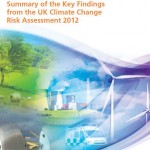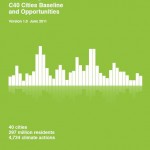Site search:
-
What’s new?
Energy for London Tags
Brent Buildings Camden Carbon Emissions CHP Cities Climate Adaptation Community Heating Community Initiatives Croydon Data DECC Decentralised Energy Distribution ECO Energy Costs Energy Efficiency Enfield FIT Fuel Poverty Funding Green Deal Hackney Haringey Housing Islington Lambeth Library Local Authorities Mayor Newham Ofgem Olympics Photovoltaics Planning RE:FIT RE:NEW Renewable Energy Retrofit Southwark Tower Hamlets Transport Waltham Forest Waste WestminsterEnergy Archives:
- February 2021 (1)
- January 2021 (15)
- December 2020 (15)
- November 2020 (9)
- October 2020 (3)
- August 2020 (5)
- July 2020 (3)
- June 2020 (4)
- April 2020 (10)
- March 2020 (5)
- February 2020 (2)
- January 2020 (3)
- October 2019 (1)
- September 2019 (4)
- August 2019 (2)
- July 2019 (1)
- August 2018 (1)
- November 2016 (8)
- October 2016 (8)
- September 2016 (2)
- August 2016 (8)
- July 2016 (14)
- April 2016 (12)
- March 2016 (16)
- February 2016 (8)
- January 2016 (4)
- December 2015 (1)
- November 2015 (1)
- October 2015 (16)
- September 2015 (3)
- June 2015 (1)
- May 2015 (1)
- April 2015 (1)
- March 2015 (1)
- February 2015 (1)
- January 2015 (1)
- December 2014 (18)
- November 2014 (4)
- August 2014 (8)
- July 2014 (7)
- June 2014 (25)
- May 2014 (8)
- April 2014 (4)
- March 2014 (12)
- February 2014 (7)
- January 2014 (13)
- December 2013 (11)
- November 2013 (15)
- October 2013 (15)
- September 2013 (18)
- August 2013 (5)
- July 2013 (20)
- June 2013 (33)
- May 2013 (8)
- April 2013 (16)
- March 2013 (25)
- February 2013 (14)
- January 2013 (20)
- December 2012 (23)
- November 2012 (23)
- October 2012 (25)
- September 2012 (14)
- July 2012 (12)
- June 2012 (43)
- May 2012 (20)
- April 2012 (8)
- March 2012 (40)
- February 2012 (39)
- January 2012 (40)
- December 2011 (22)
- November 2011 (40)
- October 2011 (33)
- September 2011 (48)
- August 2011 (40)
- July 2011 (58)
- June 2011 (41)
- May 2011 (80)
- April 2011 (38)
- March 2011 (33)
- February 2011 (25)
- January 2011 (24)
- December 2010 (3)
- November 2010 (7)
- October 2010 (6)
- September 2010 (7)
- August 2010 (1)
- July 2010 (2)
- June 2010 (4)
- May 2010 (1)
- March 2010 (3)
- February 2010 (3)
- December 2009 (5)
- November 2009 (2)
- October 2009 (3)
- July 2009 (3)
- June 2009 (1)
- April 2009 (1)
- March 2009 (1)
- February 2009 (1)
- January 2009 (1)
- December 2008 (2)
- October 2008 (1)
- September 2008 (1)
- July 2008 (1)
- March 2008 (2)
- January 2008 (2)
- October 2007 (1)
- September 2007 (3)
- July 2007 (1)
- March 2007 (1)
- February 2007 (3)
- November 2006 (3)
- August 2006 (1)
- February 2006 (1)
- May 2005 (1)
- February 2004 (1)
Search Results for: adaptation
Tube Cooling Update
17 February 2012: Transport for London (TfL) have issued a news release providing an update on measures being implemented to help ‘cool the tube’. The release reports that “At Green Park station borehole cooling technology will be used. London Underground has already successfully drilled wells to source naturally cool water from deep below Green Park and will now install air cooling units that will use the water to cool the Victoria and Piccadilly line platforms.” A similar ground water cooling scheme already operates at Victoria station.
The Mayor’s 2010 Transport Strategy (Chapter 5 – Managing and enhancing the transport system) highlights the challenges in providing ‘coolth’ to the underground:
High tunnel temperatures during the summer months are one of the biggest challenges facing the Tube, particularly for the deep tunnelled sections of the Underground,such as the Victoria line. These are generally closed systems where the major proportion of the energy that enters (for example, train motors) is released as heat, which in turn raises temperatures in the tunnels and on the trains. As a result of increased train service capacity (primarily through higher train frequencies) and reduced journey times (mainly through quicker acceleration and faster maximum speeds), electricity use on the Underground is anticipated to increase by 2020, resulting in more heat being released in the tunnels. This will be exacerbated by increasing passenger numbers and possible increases in air temperature due to climate change.
More recently, the Mayor’s 2011 Climate Change Adaptation Strategy (p104) details that:
London Underground’s aim is to minimise the heat generated by the existing network and planned upgrade of the service, so that further energy is not required to offset the heat that is generated. The interventions to cool temperature increases caused by the line upgrades will also help to manage the higher external temperatures caused by climate change. Optimising the energy efficiency of the service through driving the trains more efficiently will reduce the heating contribution from the operating regime.
Despite these efforts, temperatures on the Underground will continue to be uncomfortable in hot summers … projections suggest that on a summer day by the 2030s, there is a 24-27 per cent probability of temperatures being warmer than 24°C. By 2050s, this rises to 62-75 per cent and 70-91 per cent by 2080s. This compares to 11 per cent probability today.
A recent (2 February 2012) TfL Board Paper (page 21) also provides a summary update on Phase 1 of the Tube Cooling programme.
London faces rising temperatures
 January 2012: The Government published the UK Climate Change Risk Assessment (CCRA) on 25 January 2012, the first assessment of its kind for the UK which highlights the top 100 challenges to the UK faces as a result of a changing climate. Amongst the many changes predicted in the assessment, a number are directly in relation to London, specifically:
January 2012: The Government published the UK Climate Change Risk Assessment (CCRA) on 25 January 2012, the first assessment of its kind for the UK which highlights the top 100 challenges to the UK faces as a result of a changing climate. Amongst the many changes predicted in the assessment, a number are directly in relation to London, specifically:
- On average, hot weather accounts for around 1100 premature deaths a year in the UK. By the 2050s, this figure is projected to increase by between 580 and 5900, with the greatest risk in London and southern England.
- Summer overheating is projected to emerge as a significant risk, potentially contributing to heat-related health problems. In London, for instance, the number of days in an average year when temperatures rise above 26°C is projected to increase from the current figure of 18 to between 27 and 121 by the 2080s.
The Evening Standard summarised the findings thus: London ‘facing killer summers in climate peril’!
Chapter 5 of the London Climate Change Adaptation Strategy (issued in October 2011) focuses specifically on the issue of overheating in London as a result of climate change and commits to taking forward a number of actions including:
- working with boroughs to identify opportunities for combined cooling, heat and power and other forms of low-carbon cooling and
- promoting ‘cool roof technology’ (highly reflective, well-insulated roofs) in London to reduce demand for mechanical cooling.
London’s Energy & Climate Strategy Released
November 2011: After close to two years consultation, London’s Climate Change Mitigation and Energy Strategy was released with little fanfare by the Mayor last week. Also published at the same time were London’s Water Strategy and London’s Climate Change Adaptation Strategy.
The Energy Strategy provides a detailed account of energy consumption and generation in London, along with their associated projected CO2 emissions, and will be examined here in further detail in some future posts very shortly.
A new single ‘London Environment Strategy’
5 September 2011: The Localism Bill continues its passage through the House of Lords today, moving to Report Stage. Amongst the many changes proposed in the Bill there is a more modest, but important, clause in the Bill regarding the six environment strategies that the Mayor is currently statutorily required to produce.
Clause 212 of the latest version of the Bill calls for the Mayor to produce a ‘London Environment Strategy’ which “must contain a general assessment by the Mayor of the environment in Greater London, so far as relevant to the functions ofthe Authority or of the Mayor” containing “provisions dealing with the Mayor’s policies and proposals in relation to each of the following matters in relation to Greater London—(a) biodiversity;(b) municipal waste management;(c) climate change mitigation and energy;(d) adaptation to climate change;(e) air quality; and(f) ambient noise.”
Importantly, the Bill goes on to repeal the duty on the Mayor to publish the six separate environmental strategies. Hence it is proposed that all material/policies contained within these six individual strategies will be consolidated into the new single London Environment Strategy. The Communities and Local Government (CLG) Secretary of State may give guidance to the Mayor on the content and preparation of this new strategy and may also give the Mayor direction as to its policies. Also proposed in the Bill is a new power for the London Assembly which is the ability to reject any of the Mayor’s statutory strategies if a two-thirds majority of members vote against publication.
Despite the changes being proposed in the Bill the Mayor stated back in June that the climate change mitigation and energy strategy, the climate change adaptation strategy, the municipal waste strategy – and two further non-statutory environment strategies on business waste and water – all of which are at draft stage – will all be published by the end of the calendar year.
Globally Resilient City Number 9: London
18 July 2011: Huff Post blog reviewing best practices in mitigating and adapting to climate change in cities. This short piece is on London. It doesn’t mention London’s extremely well thought out draft Climate Change Adaptation Strategy, which comprehensively sets out how climate change will affect London’s risks to flood, drought and heatwave through the century.
C40 Research on Importance of Cities to Climate Change
 1 June 2011: The C40 Cities Climate Leadership Group (C40) released two reports today that emphasize the critical role of measurement and transparency in tackling climate change in megacities.
1 June 2011: The C40 Cities Climate Leadership Group (C40) released two reports today that emphasize the critical role of measurement and transparency in tackling climate change in megacities.
- A measurement baseline – The first‐ever public disclosure and analysis of self‐reported community‐wide greenhouse gas emissions (GHG) data from C40 cities, showing the urban concentration of GHG emissions and climate‐related risks, highlighting the importance of City government action to reduce emissions (report by the Carbon Disclosure Project)
 A benchmark of actions C40 Cities have taken to date and an inventory of powers Cities hold over sectors, demonstrating what actions have been taken across the C40 Cities and also identifying what powers City governments across the C40 have to take further actions on mitigation and adaptation. (report by Arup)
A benchmark of actions C40 Cities have taken to date and an inventory of powers Cities hold over sectors, demonstrating what actions have been taken across the C40 Cities and also identifying what powers City governments across the C40 have to take further actions on mitigation and adaptation. (report by Arup)
Greater London Authority
The Mayor’s Climate Change Mitigation and Energy Annual Report – March 2014
Mayor’s response to the Department of Energy and Climate Change’s consultation on a redefinition of fuel poverty – December 2012
London Environment Dashboard
London Renewable Energy Study – January 2012
London Climate Change Mitigation and Energy Strategy – October 2011
London Climate Change Adaptation Strategy – October 2011
Decentralised Energy pages
Consultation on London’s Housing Strategy – September 2011
The London Plan: London’s Spatial Strategy – July 2011
London’s Assembly’s Response to the Mayor’s Draft Climate Mitigation and Energy Strategy – March 2011
Mayor’s Draft Municipal Waste Strategy – October 2010
Mayor’s Draft Climate Change Mitigation and Energy Strategy’ – October 2010
Climate Change chapter of the Mayor’s Transport Strategy – May 2010
London Assembly Environment Reports
Croydon
LDF Evidence Base – Croydon Climate Change Technical Paper (March 2012)
Summary of Croydon’s Carbon Management & Energy Efficiency Programme (February 2012)
Croydon’s Climate Change Strategy and Climate Change Action Plan (including 2011 updates)
Details of Croydon District Energy Scheme June 2010
Croydon ‘Sustainable City’ brochure – June 2010
Croydon Decentralised Energy Study December 2009
Energy and environmental strategy 2008-2012 – October 2009
District energy in Croydon webpage
Towards a low carbon economy webpage
Carbon Trust Local authorities case study – Croydon power ahead in the struggle to cut carbon (March 2011)
Croydon carbon managament energy efficiency programme (2010 – 2015)
Croydon climate change adaptation action plan
State of the environment report 2010
Croydon Greenhouse Gas Emission Reports 2009/10 & 2010/11

